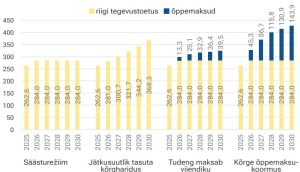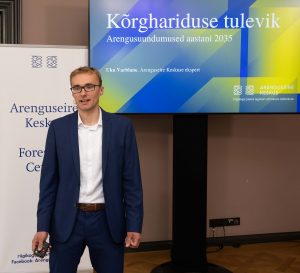Over the past decade, gross domestic product and average salaries have grown twice as fast as public funding for higher education. The Foresight Centre finds in its new short report that if the state’s contribution to higher education will no longer increase after 2026, the only alternative is the introduction of tuition fees.
News
In order to remain competitive, higher education institutions will need to adapt faster to the needs of the education market, says the Foresight Centre Report “The Future of Higher Education. Development Trends until 2035”, published yesterday. In the next decade, the need for continuing education will increase significantly, which will require greater flexibility from higher education institutions and the state in regard to forms of study.
In order to achieve optimal financing, students should cover 20% of the higher education expenditure, says the Foresight Centre Report “The Future of Higher Education. Development Trends until 2035”, published today, on 8 June.
Estonia boasts a higher percentage of university graduates than most Central and Eastern European countries, yet compared to other OECD members, our students work more while studying and also drop out more often, shows the Foresight Centre brief report “Higher Education in Estonia: Situation and Challenges”.
The question of funding higher education is becoming an increasingly hot topic in Estonia as the annual deficit is already exceeding EUR 100 million. Today, 1 February, the Foresight Centre is organising a webinar “Who should foot the bill for higher education?” to discuss the main trends in funding higher education in European countries.

 An independent think tank at the Riigikogu
An independent think tank at the Riigikogu 



